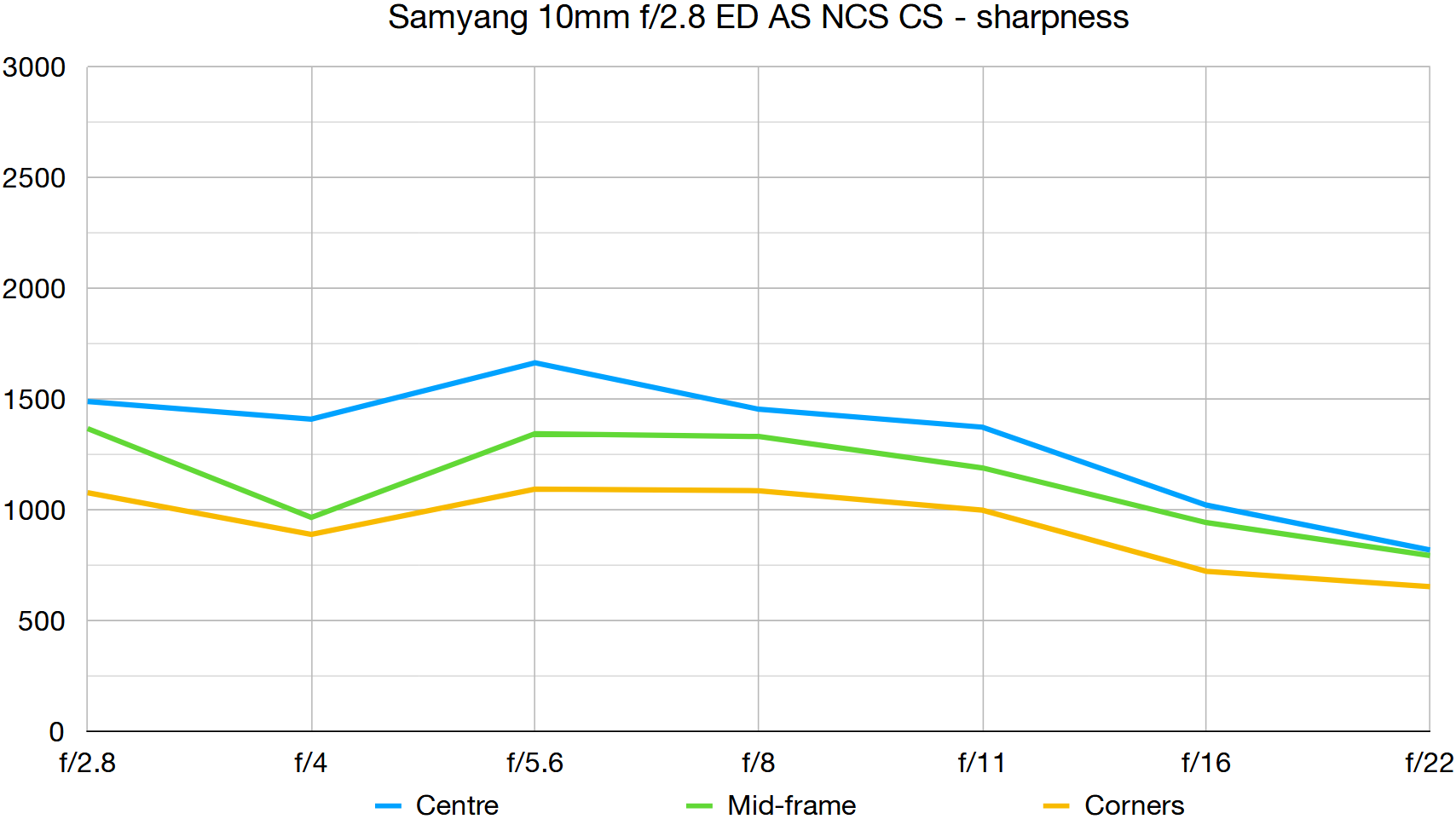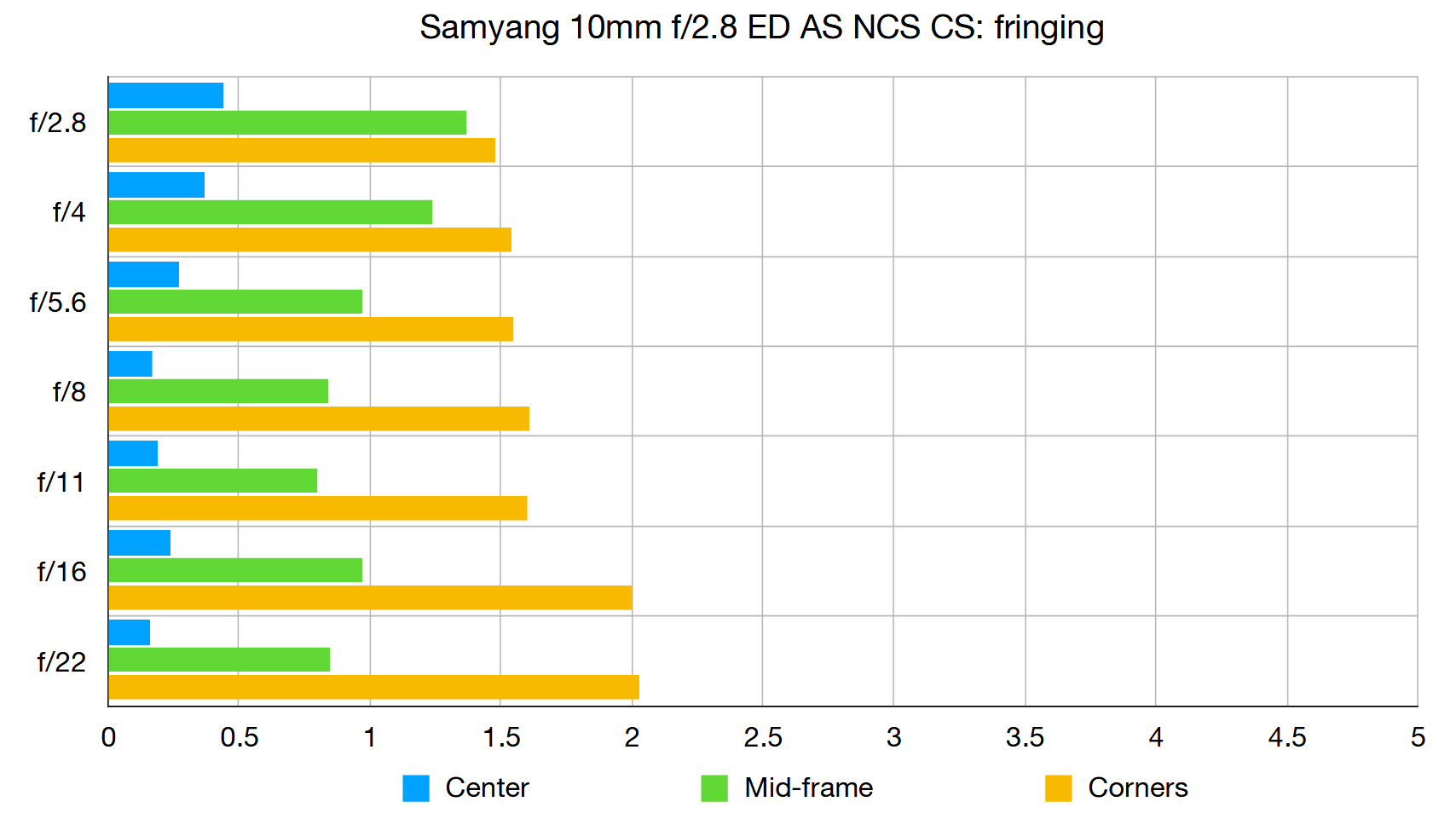Digital Camera World Verdict
A rarity for crop-sensor cameras, especially if you shoot with a DSLR rather than a mirrorless body, this Samyang is an ultra-wide-angle prime that’s available in a similarly ‘wide’ range of mount options. It gives an ‘effective’ 15mm focal length on most APS-C cameras (16mm for Canon) and a still pretty wide 20mm for Micro Four Thirds. The fairly fast f/2.8 aperture makes it useful for architectural interiors and astrophotography, as well as for sweeping landscapes.
Pros
- +
Wide viewing angle on crop-sensor cameras
- +
Fast f/2.8 aperture
- +
Smooth-action focus ring
Cons
- -
No autofocus
- -
‘Dumb’ lens, apart from Nikon-mount
- -
No filter attachment thread
Why you can trust Digital Camera World
The Samyang 10mm f/2.8 ED AS NCS CS is an ultra-wide-angle prime lens for crop-sensor cameras that comes in many guises, with mount options including Canon EF-S/EF-M, Nikon F, Pentax K, Sony A, Canon M, Fujifilm X, Sony E, Samsung NX and Micro Four Thirds. It’s a manual-focus lens and all but the Nikon F-mount option have no internal electronics at all. You therefore can’t set the aperture from the host camera body and can effectively only shoot in aperture-priority or manual modes, adjusting the aperture with the lens’s on-board control ring. The camera viewfinder’s focus confirmation lamp is also disabled.
Specifications
Mount: Canon EF-S/EF-M, Nikon F, Pentax K, Sony A, Canon M, Fujifilm X, Sony E, Samsung NX, MFT
Full-frame: No
Autofocus: No
Stabilization: No
Lens construction: 14 elements in 9 groups
Angle of view: 93-110 degrees (mount dependent)
Diaphragm blades: 6
Minimum aperture: f/22
Minimum focusing distance: 0.24m
Filter size: N/A
Dimensions: 87x104-132mm (mount dependent)
Weight: 580-620g (mount dependent)
Key features
The focus ring has a long rotational travel and a clearly marked focus distance scale. Depth of field markers are also on hand, but only for apertures of f/2.8, f/4 and f/5.6. Even so, manual focusing is easy for most landscape shooting, and you can always resort to magnified live view when you need greater focusing precision.
Build quality feels very solid and robust, although the lens lacks any weather-seals. Quality glass includes two aspherical elements and one ED (Extra-low Dispersion) element, plus nano-structure coatings. The construction includes an integral hood which precludes the fitment of filters, as there’s no attachment thread.
Performance
Centre-sharpness is good rather than great throughout the aperture range, with the sweet spot being at f/5.6. Levels of sharpness are pretty consistent across the image frame, only dropping off noticeably at the extreme edges. Color fringing is well controlled but barrel distortion is a little worse than average.
Lab results
We run a range of lab tests under controlled conditions, using the Imatest Master testing suite. Photos of test charts are taken across the range of apertures and zooms (where available), then analyzed for sharpness, distortion and chromatic aberrations.
We use Imatest SFR (spatial frequency response) charts and analysis software to plot lens resolution at the center of the image frame, corners and mid-point distances, across the range of aperture settings and, with zoom lenses, at four different focal lengths. The tests also measure distortion and color fringing (chromatic aberration).
Sharpness:

It’s not the sharpest tool in Samyang’s box but center-sharpness is certainly acceptable and remains fairly good across most of the image frame. Corner-sharpness is also pretty reasonable at wide to medium apertures.
Fringing:

There’s only a little color fringing towards the edges and corners of the image frame at most apertures although it gets a little worse at f/16-22.
Distortion: -3.62
The best camera deals, reviews, product advice, and unmissable photography news, direct to your inbox!
Barrel distortion can be clearly noticeable, especially in architectural photography, but it’s fairly uniform in nature and therefore quite easy to correct during editing.
Verdict
A rarity for crop-sensor cameras, especially if you shoot with a DSLR rather than a mirrorless body, this Samyang is an ultra-wide-angle prime that’s available in a similarly ‘wide’ range of mount options. It gives an ‘effective’ 15mm focal length on most APS-C cameras (16mm for Canon) and a still pretty wide 20mm for Micro Four Thirds. The fairly fast f/2.8 aperture makes it useful for architectural interiors and astrophotography, as well as for sweeping landscapes.
Read more:
• Best camera lenses to get
• Best Canon lenses
• Best Nikon lenses
• Best Sony lenses
Matthew Richards is a photographer and journalist who has spent years using and reviewing all manner of photo gear. He is Digital Camera World's principal lens reviewer – and has tested more primes and zooms than most people have had hot dinners!
His expertise with equipment doesn’t end there, though. He is also an encyclopedia when it comes to all manner of cameras, camera holsters and bags, flashguns, tripods and heads, printers, papers and inks, and just about anything imaging-related.
In an earlier life he was a broadcast engineer at the BBC, as well as a former editor of PC Guide.


